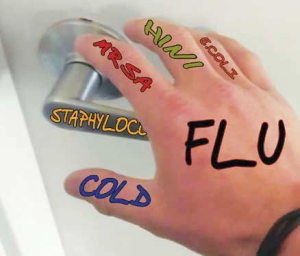 Standard principles for infection prevention and control focusing on hospital environmental hygiene, which is crucial to the prevention of healthcare associated infection (HCAI). Good hospital hygiene is vital to any strategy for preventing HCAIs in hospitals
Standard principles for infection prevention and control focusing on hospital environmental hygiene, which is crucial to the prevention of healthcare associated infection (HCAI). Good hospital hygiene is vital to any strategy for preventing HCAIs in hospitals
By Japneet Kaur, Elets News Network (ENN)
It is said that It is easy to make friends but very difficult to maintain friendship. Healthcare infrastructure is no different. It is not enough to engage great architect, health planner and a very good uting agency offering attractive, pleasing and rich specifications in the construction of healthcare infrastructure. The essence lies in the proper maintenance of infrastructure so that it functions smoothly and aids the sustainable delivery of healthcare.
Though there is a suitable protocol, standard operating procedures should be in place during the design and planning of hospitals but the efficiency and effectiveness of healthcare delivery lies in its maintenance.

HCAI- Causes and Precautions
Health care-associated infection (HCAI), also referred to as nosocomial or hospital infection, is an infection occurring in a patient during the process of care in a hospital or other health care facility which was not present or incubating at the time of admission. HCAI can affect patients in any type of setting where they receive care and can also appear after discharge. In a health-care facility, the sources of infection, and of the preceding contamination may be the personnel, the patients, or the inanimate environment. The most frequent route of transmission, however, is indirect contact. The infected patient touches“and contaminates“ an object, an instrument, or a surface. Microorganisms can be transmitted from their source to a new host through direct or indirect contact, in the air, or by vectors. Based on data from a number of countries, it can be estimated that each year, hundreds of millions of patients around the world are affected by HCAI.
Every day, HCAI results in prolonged hospital stays, long-term disability and increased resistance of microorganisms to antimicrobials, massive additional costs for health systems, high costs for patients and their family, and unnecessary deaths. Healthcare services are in a dire need of a paradigm shift in terms of providing care more efficiently.
Many infection prevention and control measures, are simple, lowcost and effective, however they require staff accountability and behavioral change.
Over time, healthcare providers and clinicians at various hospitals have realised this oversight and have instituted corrective measures. They ensure that timely checks and actions are taken to make sure that delivery of health care is uninterrupted and efficient.
Many of these efficient ways of functioning are being practised across the country. Diagnostic and other allied services like laundry, kitchen waste management are already being outsourced. This is called wet leasing where, the space is provided within the infrastructure and the cost of installation, running and maintenance of the equipment lies with the vendor. Similarly, facility management is out-sourced and is responsible for looking after the house keeping and engineering maintenance besides the efficient functioning of these out sourced areas of specialty. This has helped in creating an environment where the clinician and medical staff can attend their clinical services more efficiently and effectively and not worry about maintenance of general running of the hospital.
Infection control is the discipline concerned with preventing HCAI. It is an essential (though often under-recognized and under-supported) part of the infrastructure of health care.

Be a part of Elets Collaborative Initiatives. Join Us for Upcoming Events and explore business opportunities. Like us on Facebook , connect with us on LinkedIn and follow us on Twitter , Instagram.
"Exciting news! Elets technomedia is now on WhatsApp Channels Subscribe today by clicking the link and stay updated with the latest insights!" Click here!










